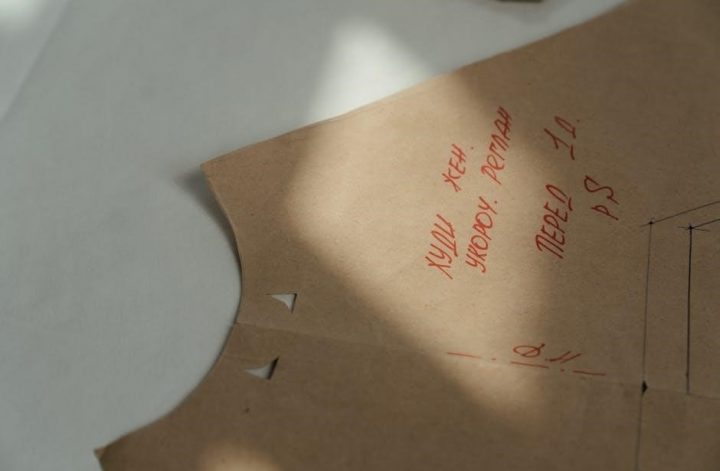Jeny’s Surprisingly Stretchy Bind-Off is a popular, elastic technique perfect for sweaters, hats, and socks. Created by Jeny Staiman, it offers a neat finish and easy learning curve.
Overview of the Technique
Jeny’s Surprisingly Stretchy Bind-Off is a versatile and elastic method perfect for projects requiring flexibility, like sweaters, hats, and socks. It uses a reverse yarn over technique to create a stretchy edge while maintaining a clean finish. The method works seamlessly on ribbing, stockinette, or garter stitch, making it adaptable to various knitting projects. Unlike traditional bind-offs, it allows for ease of movement without compromising the structure of the garment. This technique is ideal for knitters seeking a balance between elasticity and a polished appearance, making it a go-to choice for many modern knitting patterns.
Why This Bind-Off is Popular Among Knitters
Knitters adore Jeny’s Surprisingly Stretchy Bind-Off for its exceptional elasticity, making it ideal for garments like sweaters, hats, and socks that require flexibility. Unlike traditional methods, it avoids tightness while maintaining a clean finish. The technique’s simplicity and ease of learning appeal to knitters of all skill levels. Its versatility across ribbing, stockinette, and garter stitch ensures consistency and reduces the need to learn multiple methods. Additionally, the neat, professional edge it provides enhances the overall appearance of projects, making it a trusted choice in the knitting community.

Step-by-Step Written Instructions
Begin by working a reverse yarn over, then knit one stitch. Next, lift the yarn over and bind off, repeating this process for a seamless, elastic edge.
Binding Off Knit Stitches
To bind off knit stitches using Jeny’s method, start by working a reverse yarn over (wrap the yarn clockwise around the right needle). Knit the first stitch as usual. Next, lift the yarn over and bind it off by pulling it over the knitted stitch. Repeat this process, ensuring each yarn over is worked backward before knitting the next stitch. This creates a stretchy, elastic edge perfect for garments needing flexibility, like sweater bottoms or sleeves. Adjust your needle size if needed to maintain even tension and a neat appearance.
Binding Off Purl Stitches
For purl stitches, begin by working a standard yarn over (front to back over the right needle). Purl the first stitch as usual. Next, lift the yarn over and bind it off by pulling it over the purled stitch. Continue this process, ensuring each yarn over is worked in the usual direction before purling the next stitch. This method maintains the stretch and elasticity of the bind-off while keeping the edge neat. Use a smaller needle if needed to achieve the desired tension and avoid flaring, ensuring a professional finish for your knitting projects.
Pro Tips for Mastering the Technique
Use a smaller needle to prevent flaring, maintain even tension, and practice the backward yarn over for consistent results. Avoid over-tightening to preserve elasticity and neatness.
Handling Yarn Overs Effectively
Mastering yarn overs is key to Jeny’s Stretchy Bind-Off. Start by creating a backward yarn over (clockwise wrap) before knitting or purling the next stitch. Use your index finger to gently pin the yarn over in place, ensuring it doesn’t slip. This technique prevents the yarn from twisting and maintains even tension. Avoid pulling the yarn too tightly, as this can restrict elasticity. For purl stitches, work a forward yarn over (counterclockwise wrap) before purling. Consistent yarn over management ensures a smooth, stretchy edge. Practice this step to achieve professional-looking results.
Adjusting Tension for Perfect Results
Proper tension is crucial for Jeny’s Stretchy Bind-Off. To avoid a too-tight or overly loose edge, use a needle size smaller than your project needle—often half the size. This ensures the bind-off lies flat while maintaining elasticity. Avoid over-tightening stitches, as this can restrict stretch. If stitches feel too loose, try a slightly smaller needle. For sweaters or sleeves, test the tension on a swatch to ensure a smooth, even edge. The goal is a balanced tension that allows the fabric to stretch comfortably without flaring. Adjust as needed for your project’s specific needs.

Best Applications for Jenys Stretchy Bind-Off
Jeny’s Stretchy Bind-Off is ideal for projects requiring elasticity, such as sweaters, sleeves, hats, socks, and baby booties, ensuring a comfortable and flexible finish.
Using It for Sweaters and Sleeves
Jeny’s Stretchy Bind-Off is a favorite for sweaters and sleeves due to its exceptional elasticity and neat finish. It prevents tightness at the bottom edges while maintaining shape. Using a smaller needle size, as recommended, ensures a clean look without compromising stretch. This method is particularly effective for garments requiring ease of movement, such as sweaters with fitted silhouettes or sleeves that need flexibility. The technique works beautifully with stockinette stitch, ribbing, or garter stitch, making it versatile for various knitting projects. Its subtle texture and memory retention make it ideal for everyday wear.
Perfect for Hats, Socks, and Baby Booties
Jeny’s Surprisingly Stretchy Bind-Off is ideal for hats, socks, and baby booties, where flexibility is essential. The elastic nature ensures a comfortable fit, especially for items like toe-up socks and tightly fitted hats. The technique’s subtle texture blends seamlessly with ribbing, making it perfect for baby booties and other small projects. Its ease of use and memory retention ensure garments stretch and recover well, maintaining their shape over time. Knitters love this method for its reliability and professional finish, making it a go-to for projects requiring both stretch and durability.

Troubleshooting Common Issues
Tight stitches and yarn over mistakes are common. Using a smaller needle can help achieve a stretchy yet neat edge without flaring or losing shape over time.
Dealing with Tight Stitches
Tight stitches can occur if the yarn overs are pulled too tightly. To fix this, try using a needle size smaller than your working needle for the bind-off. This allows the edge to remain stretchy while maintaining a clean look. Additionally, avoid over-tightening the stitches as you work. If the bind-off feels too rigid, blocking the finished project can help relax the stitches and restore elasticity. Experimenting with needle sizes and tension will help achieve the perfect balance between stretch and structure.
Fixing Yarn Over Mistakes
If a yarn over is dropped or misaligned, it can create unevenness. To fix this, gently remove the stitch from the needle and reinsert it, ensuring the yarn over is correctly positioned. For backwards yarn overs, use your index finger to pin the yarn in place while knitting or purling the next stitch. If a yarn over is missed, insert the needle into the stitch below and pull the yarn up to recreate the over. Always work slowly and keep tension even to maintain the bind-off’s elasticity and neat appearance.

About the Creator: Jeny Staiman
Jeny Staiman is a mom, usability engineer, and passionate knitter with 15+ years of experience. She specializes in socks, hats, and gloves, creating practical, versatile techniques like her iconic stretchy bind-off method.
Her Contribution to Knitting
Jeny Staiman revolutionized knitting with her Surprisingly Stretchy Bind-Off, a technique combining elasticity and neatness. Her method, ideal for sweaters, hats, and socks, ensures comfort and professional finishes. As a usability engineer and knitter, Jeny’s practical approach has empowered crafters worldwide, making her a beloved figure in the knitting community. Her techniques are celebrated for simplicity, versatility, and effectiveness, inspiring countless projects and fostering creativity among knitters of all skill levels.
Other Techniques and Patterns by Jeny
Beyond her iconic bind-off, Jeny Staiman has contributed to various knitting patterns and techniques, particularly in accessories like socks, hats, and gloves. Her work often blends functionality with creativity, catering to knitters seeking practical yet stylish designs. Jeny is also known for her tutorials and articles that simplify complex knitting concepts. Her exploration of moebius knitting and mathematical forms showcases her innovative approach. By sharing her knowledge, Jeny has become a trusted resource for knitters worldwide, inspiring both beginners and experienced crafters with her accessible and imaginative designs.
Jeny’s Surprisingly Stretchy Bind-Off is a versatile and elastic technique ideal for projects requiring flexibility. For further learning, explore tutorials on Cocoknits and Nimble-Needles, offering detailed guides and patterns.
Final Tips for Success
Mastering Jeny’s Stretchy Bind-Off requires attention to tension and stitch handling. Use a smaller needle for a neater edge and avoid over-tightening stitches. When working with yarn overs, pin them with your index finger to maintain control. For smaller gauge yarns, slipping stitches one at a time can simplify the process. Practice on swatches before applying it to projects like sweaters or socks. This method ensures a stretchy, durable finish, making it ideal for garments requiring flexibility. With patience, it becomes a go-to technique for knitters seeking elastic edges.
Recommended Tutorials and Patterns
For a seamless learning experience, explore tutorials like Cocoknits’ detailed guide with step-by-step images and written instructions. Knitty’s original article by Jeny Staiman provides a comprehensive overview. Nimble Needles offers an animated GIF tutorial, perfect for visual learners. Additionally, patterns like the Franca sweater and Mabel sweater showcase this bind-off in action. For practice, try swatches or small projects like hats or socks. These resources ensure mastery of Jeny’s technique, making it a versatile tool for any knitter seeking elastic, professional finishes.




